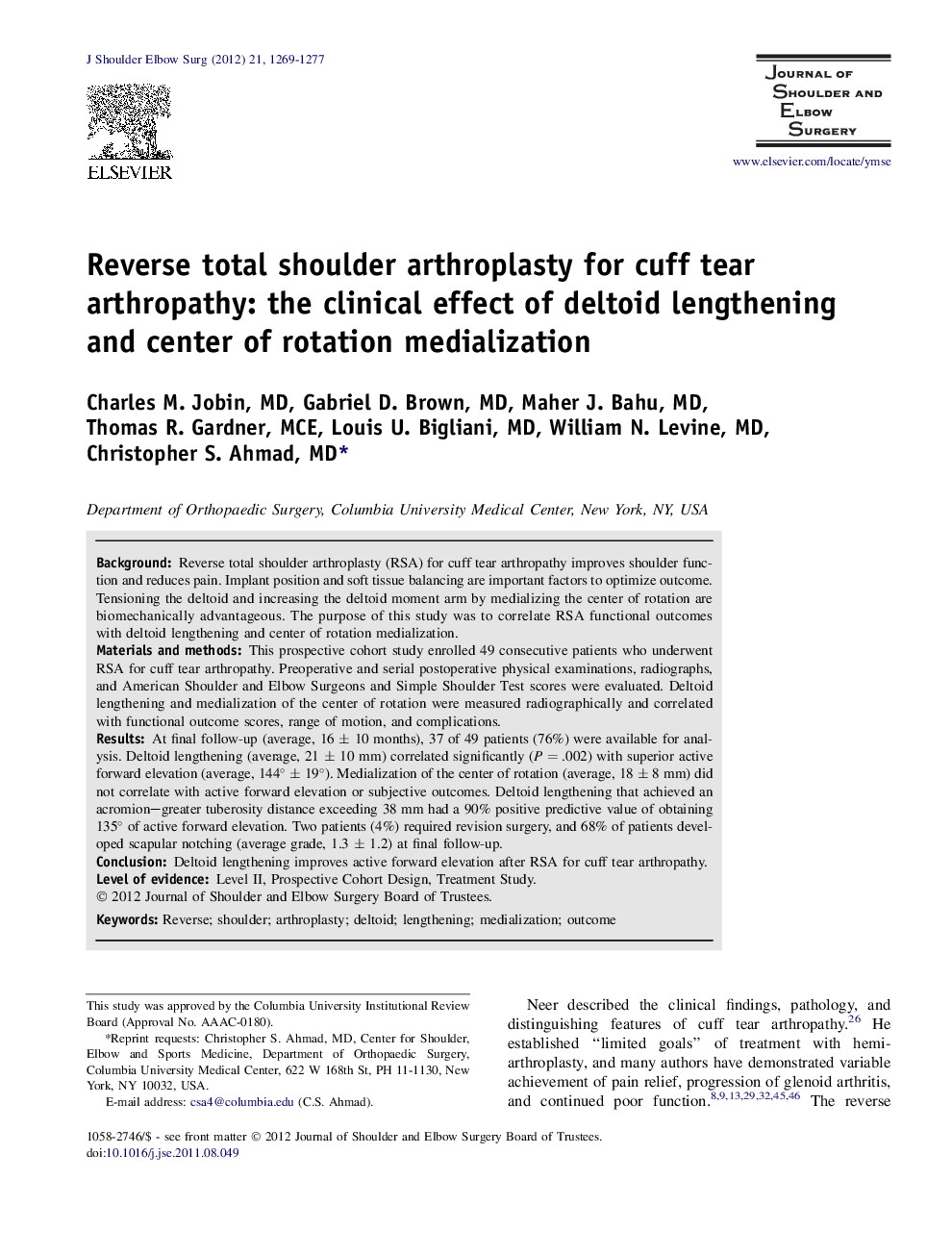| Article ID | Journal | Published Year | Pages | File Type |
|---|---|---|---|---|
| 4074170 | Journal of Shoulder and Elbow Surgery | 2012 | 9 Pages |
BackgroundReverse total shoulder arthroplasty (RSA) for cuff tear arthropathy improves shoulder function and reduces pain. Implant position and soft tissue balancing are important factors to optimize outcome. Tensioning the deltoid and increasing the deltoid moment arm by medializing the center of rotation are biomechanically advantageous. The purpose of this study was to correlate RSA functional outcomes with deltoid lengthening and center of rotation medialization.Materials and methodsThis prospective cohort study enrolled 49 consecutive patients who underwent RSA for cuff tear arthropathy. Preoperative and serial postoperative physical examinations, radiographs, and American Shoulder and Elbow Surgeons and Simple Shoulder Test scores were evaluated. Deltoid lengthening and medialization of the center of rotation were measured radiographically and correlated with functional outcome scores, range of motion, and complications.ResultsAt final follow-up (average, 16 ± 10 months), 37 of 49 patients (76%) were available for analysis. Deltoid lengthening (average, 21 ± 10 mm) correlated significantly (P = .002) with superior active forward elevation (average, 144° ± 19°). Medialization of the center of rotation (average, 18 ± 8 mm) did not correlate with active forward elevation or subjective outcomes. Deltoid lengthening that achieved an acromion–greater tuberosity distance exceeding 38 mm had a 90% positive predictive value of obtaining 135° of active forward elevation. Two patients (4%) required revision surgery, and 68% of patients developed scapular notching (average grade, 1.3 ± 1.2) at final follow-up.ConclusionDeltoid lengthening improves active forward elevation after RSA for cuff tear arthropathy.
